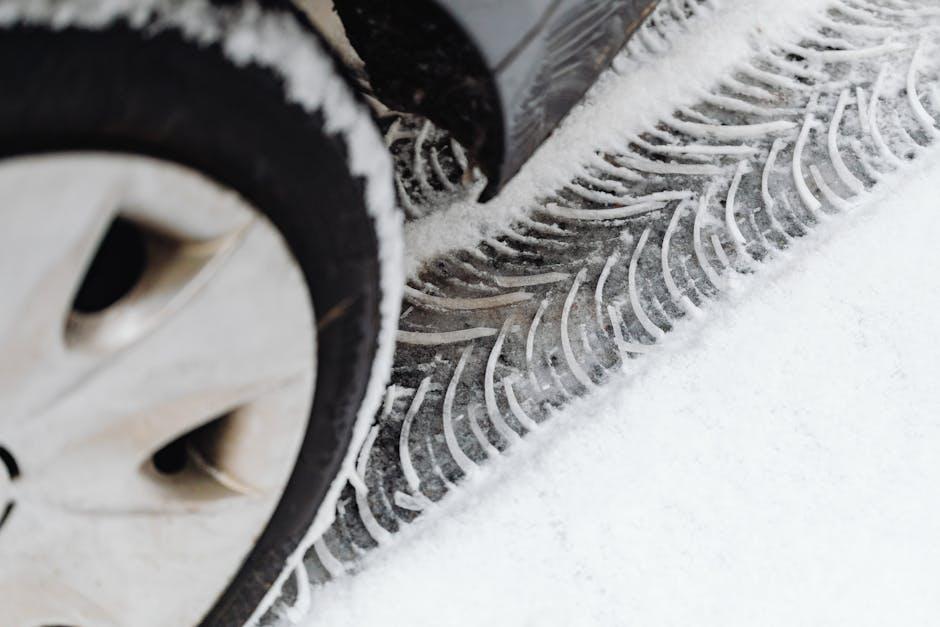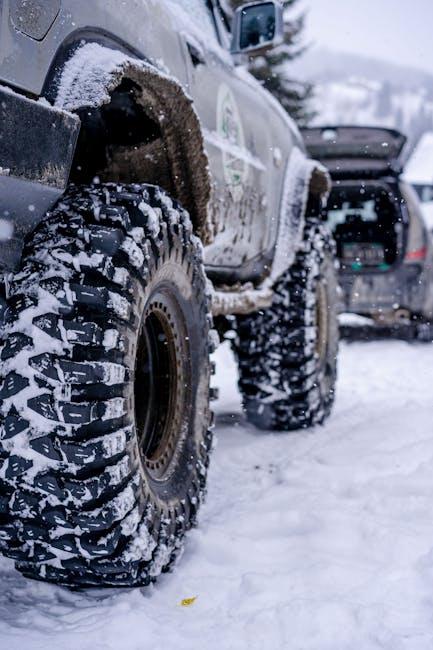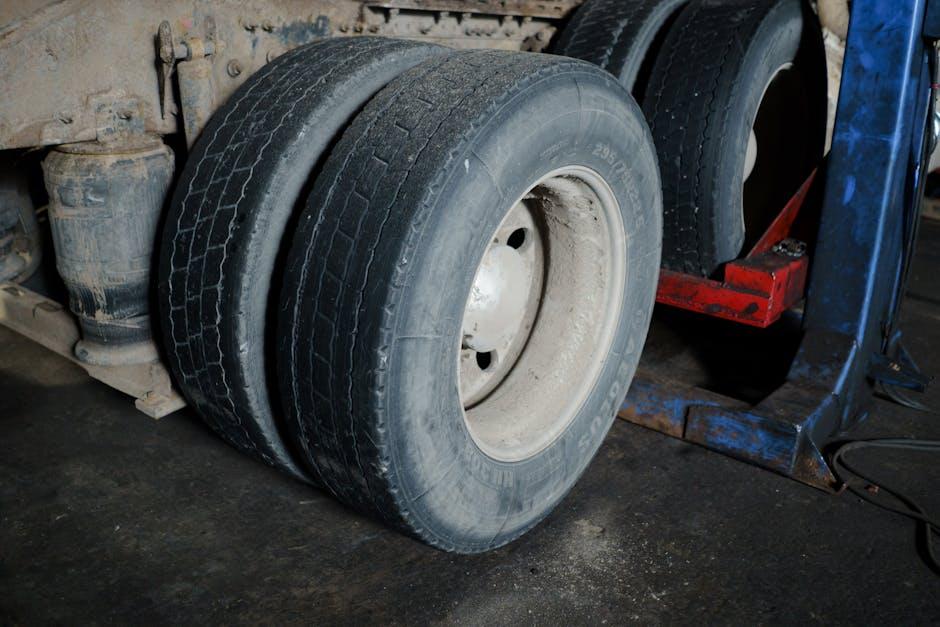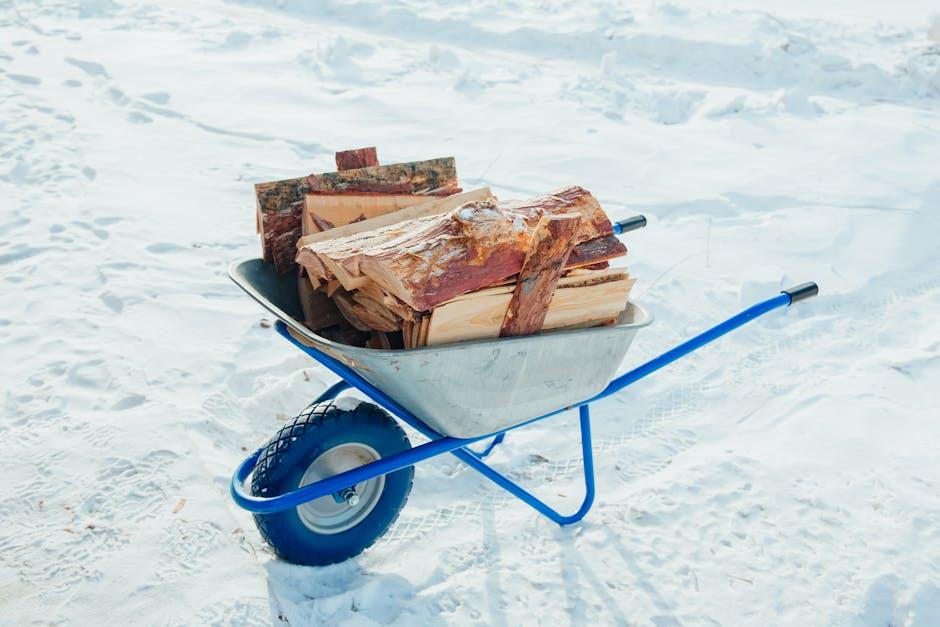When the seasons shift and the temperature begins to teeter on the edge, the question arises: should your tires change with the calendar? Winter and summer tires, each engineered with distinct materials and tread patterns, promise different performances depending on the weather’s whims. Understanding the subtle—and sometimes striking—differences between these two tire types can be the key to safer journeys and smoother rides. In this exploration of winter vs summer tires, we delve into what makes each suited to its season, and how choosing the right set could transform your driving experience no matter the forecast.
Table of Contents
- Choosing the Right Tire for Seasonal Safety and Performance
- Understanding Tread Patterns and Their Impact on Traction
- How Temperature Influences Tire Rubber Compounds
- Fuel Efficiency Considerations with Winter and Summer Tires
- Maintenance Tips to Maximize Tire Lifespan Year-Round
- When to Make the Seasonal Switch for Optimal Driving Conditions
- Q&A
- Key Takeaways

Choosing the Right Tire for Seasonal Safety and Performance
When selecting tires to maintain optimal safety and performance throughout the year, understanding the specific advantages of winter and summer variants is crucial. Winter tires are engineered with deeper tread patterns and a softer rubber compound that remains flexible in subzero temperatures, enhancing grip on icy and snowy roads. Conversely, summer tires feature a harder compound that provides better traction on hot pavement and improved cornering stability in dry or wet conditions, but they can become rigid and less effective in cold weather.
To make a well-informed decision, consider the following factors:
- Temperature tolerance: Winter tires excel below 7°C (45°F), while summer tires are optimized for temperatures above.
- Road conditions: Snowy, icy, or slushy environments call for winter tires; hot, dry, or mildly wet roads benefit from summer tires.
- Tread wear: Winter tires wear faster on warm, dry pavement, whereas summer tires can harden and lose traction in cold weather.
| Feature | Winter Tires | Summer Tires |
|---|---|---|
| Optimal Temperature | Below 7°C (45°F) | Above 7°C (45°F) |
| Tread Design | Deep grooves, sipes | Shallow grooves, wider contact patch |
| Rubber Compound | Soft and flexible | Hard and firm |
| Performance Advantages | Grip on snow and ice | Handling on dry and wet warm roads |

Understanding Tread Patterns and Their Impact on Traction
At the heart of a tire’s performance lies its tread pattern, which plays a crucial role in how well it grips the road under varying conditions. Winter tires feature deep, aggressive grooves and numerous sipes—tiny slits in the tread blocks—that work together to channel snow, slush, and water away from the tire surface. This design enables superior traction by biting into snow and gripping icy surfaces, reducing slippage and improving control. In contrast, summer tires boast shallower, more streamlined tread patterns designed to maximize contact with dry and wet roads, enhancing handling precision and braking responsiveness in warm weather.
Key tread pattern differences include:
- Groove depth: Deeper in winter tires for better snow displacement
- Sipe density: More abundant in winter tires for extra biting edges
- Tread block shape: More rigid and wider in summer tires to optimize stability
- Void ratio: Higher in winter tires to improve water evacuation and prevent hydroplaning
| Feature | Winter Tires | Summer Tires |
|---|---|---|
| Groove Depth | High (8-12 mm) | Low (4-6 mm) |
| Sipe Count | High | Low |
| Tread Blocks | Smaller, flexible | Larger, rigid |
| Water Channeling | Excellent | Moderate |
Understanding these tread pattern distinctions aids drivers in making informed decisions concerning their tire choices. The carefully engineered design of winter tires excels in low temperatures and slick conditions, while the precise tread layout of summer tires delivers optimal performance when the sun is out and the roads are dry. Recognizing how tread patterns influence traction helps ensure safety and efficiency in every season.

How Temperature Influences Tire Rubber Compounds
At the heart of tire performance lies the intricate chemistry of rubber compounds, finely tuned to react differently across temperature ranges. When temperatures drop, typical summer tire rubber hardens, losing elasticity and grip. Conversely, winter tires incorporate specialized polymers and additives that remain pliable in freezing conditions, ensuring traction doesn’t falter. This flexibility is crucial not only for maneuverability but also for maintaining safe braking distances on slick surfaces. The molecular design of these compounds is what allows winter tires to outperform in cold climates by maximizing surface contact and grip.
Temperature shifts also affect how quickly the tire warms up and adapts during driving. Summer tires are optimized to reach their peak performance once warmed, meaning their compounds soften under heat to provide enhanced grip and responsiveness on warm roads. Below is a simple breakdown of compound behaviors by season and temperature:
| Temperature Range | Winter Tire Compound | Summer Tire Compound |
|---|---|---|
| Below 7°C (45°F) | Remains soft and flexible | Tends to harden, less grip |
| 7°C – 25°C (45°F – 77°F) | Moderately soft | Ideal grip and handling |
| Above 25°C (77°F) | Can become overly soft | Maintains optimal stiffness for control |
- Winter compounds: Designed for low temperature elasticity and snow grip.
- Summer compounds: Balanced for heat absorption and dry road traction.
- Temperature sensitivity: Key factor in choosing the right tire for your climate.

Fuel Efficiency Considerations with Winter and Summer Tires
The choice between winter and summer tires significantly impacts your vehicle’s fuel efficiency. Winter tires, with their softer rubber compounds and deeper tread patterns, provide enhanced grip on cold, icy roads but can slightly increase rolling resistance. This added resistance means your engine has to work a bit harder, which can lead to a modest decrease in fuel economy under typical driving conditions. Conversely, summer tires are designed with harder compounds and shallower treads to optimize contact with dry and wet roads, resulting in less rolling resistance and typically better fuel efficiency during warmer months.
Consider these key points when evaluating fuel efficiency:
- Rolling Resistance: Winter tires usually have higher rolling resistance, which can reduce mpg slightly.
- Temperature Sensitivity: Summer tires maintain efficient fuel consumption only above 45°F (7°C); below this, their performance drops.
- Tread Design: More aggressive tread blocks increase grip but may cause additional drag.
| Tire Type | Optimal Temperature Range | Effect on Fuel Efficiency |
|---|---|---|
| Winter Tires | -22°F to 45°F (-30°C to 7°C) | Possible slight decrease due to higher rolling resistance |
| Summer Tires | Above 45°F (7°C) | Improved fuel efficiency in warm conditions |

Maintenance Tips to Maximize Tire Lifespan Year-Round
To ensure your tires deliver optimal performance throughout the year, regular upkeep is essential. Begin by checking your tire pressure monthly, as fluctuating temperatures can cause air to expand or contract, impacting traction and wear. Rotate your tires every 6,000 to 8,000 miles to promote even wear patterns, which extends their usable life and maintains balanced handling. Additionally, keep an eye on tread depth—summer tires need sufficient tread for safe water evacuation during wet conditions, while winter tires rely on deep grooves for gripping snow and ice.
Proper storage when switching between seasonal tires plays a crucial role in their longevity. Store tires in a cool, dry place away from direct sunlight and chemicals. If possible, keep them in airtight bags or covers to prevent ozone damage. When mounting, always ensure the right type of tire is installed for the current season to avoid unnecessary wear and compromised safety.
| Maintenance Task | Frequency | Benefit |
|---|---|---|
| Check Tire Pressure | Monthly | Optimal grip and fuel efficiency |
| Tire Rotation | Every 6,000-8,000 miles | Even tread wear |
| Tread Inspection | Before Season Change | Safe traction |
| Proper Storage | Seasonal Off-Use | Prevents damage |

When to Make the Seasonal Switch for Optimal Driving Conditions
Knowing the perfect moment to switch between winter and summer tires is crucial for maximizing safety and tire longevity. Generally, when the daily average temperature consistently rises above 7°C (45°F), it’s time to swap out winter tires in favor of their summer counterparts. Winter tires are designed with softer rubber compounds that perform best in cold conditions, but they wear down quickly on warm pavements. Conversely, summer tires thrive in warmer weather by providing enhanced grip, handling, and shorter braking distances. Making the switch too early or too late can not only reduce performance but also increase wear and fuel consumption.
Several factors should be taken into consideration when planning your seasonal tire change:
- Local climate variations: Mountainous or shaded areas might retain cold temperatures longer.
- Road conditions: Anticipate early snowfalls or late frosts by monitoring weather forecasts.
- Driving patterns: Frequent highway drives may allow for earlier transitions due to faster warming roads.
| Temperature Range | Recommended Tire Type |
|---|---|
| Below 7°C (45°F) | Winter Tires |
| Above 7°C (45°F) | Summer Tires |
Q&A
Q: What are the key differences between winter tires and summer tires?
A: Winter tires are designed with specialized rubber compounds that stay flexible in cold temperatures, along with deeper tread patterns to grip snow and ice. Summer tires, on the other hand, have stiffer rubber optimized for warm weather and treads that maximize contact with dry or wet roads, offering better responsiveness and handling in heat.
Q: Why can’t I just use summer tires all year round?
A: Using summer tires in winter is like wearing sandals in a snowstorm—they just aren’t built for the cold. Summer tires harden as temperatures drop, significantly reducing grip on icy or snowy surfaces, which can lead to longer stopping distances and a higher risk of slipping.
Q: Are winter tires only useful in snow?
A: Not at all! Winter tires shine in cold weather whether or not snow is present. Their tread design and rubber compounds improve traction on icy, wet, or even dry cold roads, making winter driving safer overall.
Q: Can I switch to winter tires as soon as the temperature drops?
A: Yes! Many experts recommend switching when temperatures consistently fall below 45°F (7°C). This is when winter tires begin to outperform summer or all-season tires due to their softer rubber and tread patterns.
Q: How do summer tires perform in hot weather?
A: Summer tires bring the best out of your vehicle in warm conditions—they offer superior grip, sharper handling, and better braking on both dry and wet roads, thanks to their firm rubber compounds and wide tread blocks.
Q: What about all-season tires—are they a good compromise?
A: All-season tires attempt to balance summer and winter performance but can fall short in extreme conditions. They work fine in mild climates but don’t offer the same winter grip as dedicated winter tires or the full summer handling prowess of summer tires.
Q: How does tire pressure factor into the performance of winter and summer tires?
A: Tire pressure fluctuates with temperature, so it’s important to maintain recommended levels for both types of tires. Proper inflation ensures optimal contact with the road, enhancing traction, safety, and tire longevity.
Q: Is it expensive to have both winter and summer tires?
A: There’s an upfront cost to having two sets, but many drivers find it worthwhile for improved safety and performance. Plus, rotating tires seasonally can extend their lifespan, potentially saving money in the long run.
Q: Can I install winter tires on all types of vehicles?
A: Generally, yes. However, it’s important to choose tires that fit your vehicle’s specifications and consult with a tire professional to ensure optimal performance and safety.
Q: In the battle of winter vs summer tires, which one wins?
A: The real winner depends on the season! Summer tires dominate warm weather highways, while winter tires reign supreme on icy, snowy roads. Using each in their prime conditions is the best strategy for safe and confident driving year-round.
Key Takeaways
As the seasons shift and the roads transform beneath our wheels, the choice between winter and summer tires becomes more than just a matter of preference—it’s a key to safety and performance. Winter tires embrace the chill with their specialized tread and rubber compounds, carving confidence from ice and snow. Summer tires, meanwhile, grip the warmth of dry and wet pavement with precision and agility. Understanding these differences empowers you to adapt your ride to the rhythm of the seasons, ensuring every journey feels secure and in control, no matter the weather. So, when the mercury drops or the sun blazes high, let your tires be the quiet champions of your drive.

